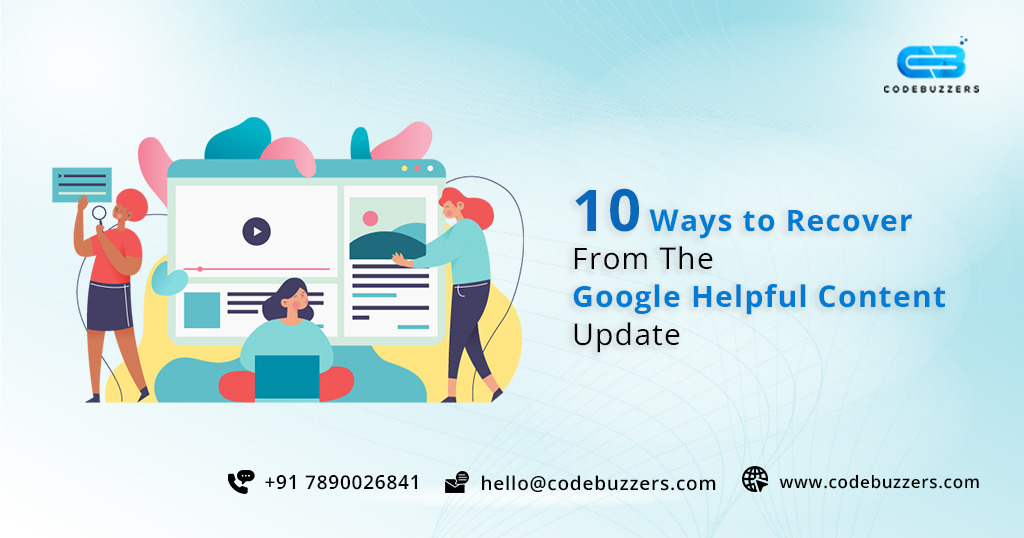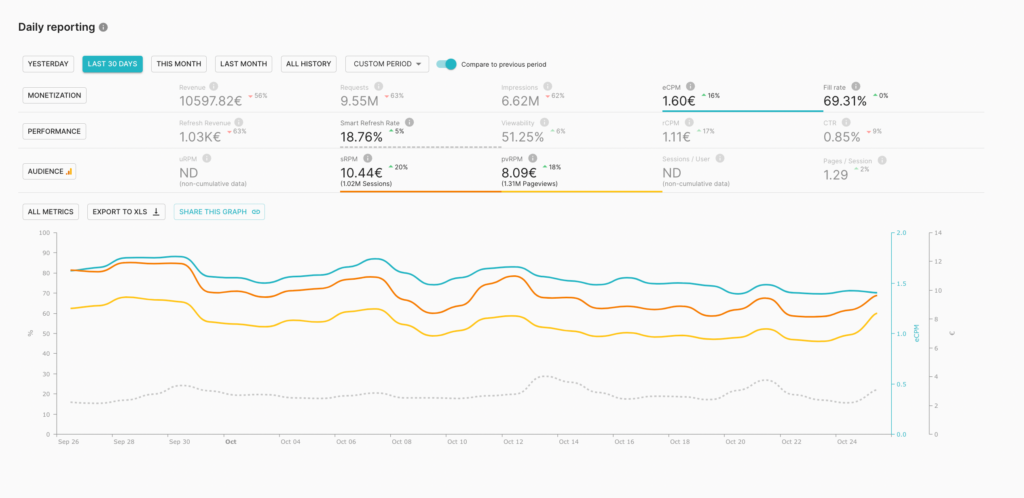Discover the key strategies to bounce back from Google’s latest content update and ensure your website stays competitive online.

Image courtesy of via DALL-E 3
Table of Contents
- Introduction: What is Google’s Helpful Content Update?
- Step 1: Understand What ‘Helpful Content’ Means
- Step 2: Audit Your Current Content
- Improve Content Quality
- Focus on User Experience
- Encourage User Engagement
- Step 6: Monitor and Adjust
- Summary: Bringing It All Together
- Frequently Asked Questions (FAQs)
Introduction: What is Google’s Helpful Content Update?
In the vast world of the internet, Google plays a crucial role in helping us find information quickly and easily. You see, Google uses special formulas called algorithms to decide which websites show up when we search for something. One of the latest updates to Google’s algorithm is called the Helpful Content Update – let’s dive into what this means!
Why Did Google Make This Update?
Google’s main goal is to make sure that when you search for something, you get the most useful and relevant information possible. With so much content available online, it can be hard to find exactly what you’re looking for. That’s why Google wants to make sure that websites with helpful and high-quality content show up at the top of search results.
How Does This Update Affect Websites?
Now, you might be wondering, how does this update actually impact websites? Well, Google looks at different factors when deciding which websites are the most helpful. They want websites to provide information that is accurate, easy to understand, and up-to-date. Websites that meet these criteria are more likely to rank higher in Google search results. This means that websites need to focus on creating content that truly helps people looking for information.
Step 1: Understand What ‘Helpful Content’ Means
When it comes to Google’s Helpful Content Update, understanding what exactly constitutes ‘helpful’ content is key to improving your website’s ranking. Google aims to provide users with the most relevant and useful information when they search, so your content needs to meet certain criteria to be considered helpful.
User-Centered Content
Creating user-centered content means putting the needs of your audience first. Your content should provide valuable and accurate information that addresses the questions and concerns of your target audience. Think about what would be most helpful to someone searching for your topic and tailor your content to meet those needs.
Original and Unique Information
Google values originality and uniqueness in content. To stand out and be considered helpful, your content should offer a fresh perspective or present information in a way that hasn’t been done before. Avoid duplicating content from other sources and focus on providing your audience with something new and valuable.
Step 2: Audit Your Current Content
Before you start making changes to your website’s content, it’s essential to take a close look at what you already have. This step, known as a content audit, helps you identify areas that need improvement. Let’s dive into how you can review your existing content effectively.

Image courtesy of www.codebuzzers.com via Google Images
Identify Low-Quality Content
Low-quality content can harm your website’s credibility and rankings. Look for pages that are thin on information, outdated, or off-topic. Content that lacks depth or relevance should be updated or removed altogether. Remember, quality over quantity is key when it comes to creating content that Google considers helpful.
Use Tools for Content Review
There are many tools available to help you assess the quality of your content. These tools can provide insights on readability, SEO optimization, and overall engagement. Consider using readability tests to ensure your content is easy to understand. SEO analyzers can help you optimize your content for better search engine visibility. By utilizing these tools, you can gain valuable insights into how to improve your content effectively.
Improve Content Quality
One way to improve the quality of your website’s content is by adding more detailed information. When users visit your site, they are looking for valuable and informative content that answers their questions. By providing thorough explanations and examples, you can make your content richer and more engaging for your audience.
Enhance Readability
To make your content more helpful to users, it’s essential to enhance its readability. This means using easy-to-read language, breaking up text with short sentences, and organizing information with clear headings. By structuring your content in a way that is easy to digest, you can make it more accessible and user-friendly.
Update Outdated Information
Another important step in improving content quality is to ensure your information is up-to-date. Users rely on your website for accurate and current information, so it’s crucial to regularly review and update your content with the latest trends and insights. By keeping your content fresh and relevant, you can maintain the trust of your audience and ensure they continue to find value in your website.
Focus on User Experience
When it comes to making your website user-friendly, one of the key elements to focus on is improving website navigation. This involves creating a clear and intuitive navigation structure so that users can easily find what they are looking for. Think of it as creating signposts that direct visitors to the right places on your site. By organizing your content in a logical manner and providing easy-to-follow menus and links, you can help users navigate your site effortlessly.

Image courtesy of setupad.com via Google Images
Optimize for Mobile Devices
In this day and age, it’s crucial to ensure that your website is optimized for mobile devices. With an increasing number of people browsing the internet on smartphones and tablets, you don’t want to risk losing potential visitors due to a poorly optimized site. Make sure that your website is responsive, meaning it adapts to different screen sizes and resolutions. This way, users can access your content easily no matter what device they are using.
Encourage User Engagement
Engaging with users is a crucial aspect of creating a vibrant online community. By encouraging user interaction on your website, you can foster a sense of connection, collect valuable feedback, and increase overall satisfaction. Here are some strategies to help boost user engagement:
Enable Comments and Discussion
One way to encourage user engagement is by allowing visitors to leave comments on your articles or posts. This creates a space for discussions, feedback, and sharing of ideas. Responding to comments also shows that you value your audience’s input, which can further enhance their connection to your website.
Use Interactive Elements
Interactive elements, such as polls, quizzes, or surveys, can make your content more engaging and enjoyable for users. By incorporating interactive features, you can create a dynamic and immersive experience that encourages visitors to participate actively. This not only increases engagement but also provides valuable insights into your audience’s preferences and interests.
Step 6: Monitor and Adjust
After putting in the hard work to create helpful content and improve your website user experience, it’s essential to track how well your efforts are paying off. Analytics tools can provide valuable insights into how users interact with your content, which pages are performing well, and where there may be room for improvement. By using tools like Google Analytics, you can gather data on traffic sources, user behavior, and conversion rates to make informed decisions about your content strategy.

Image courtesy of setupad.com via Google Images
Make Regular Updates
Creating helpful content is an ongoing process, not a one-time task. To stay ahead of the game and maintain your website’s relevance, it’s crucial to make regular updates to your content. This includes refreshing outdated information, adding new insights or examples, and responding to user feedback. By consistently reviewing and adjusting your content based on analytics data and user engagement, you can ensure that your website continues to provide value and stay competitive in search rankings.
Summary: Bringing It All Together
In this article, we’ve explored the critical aspects of Google’s Helpful Content Update and how it impacts websites. Now, let’s bring together all the essential steps discussed to help you recover and thrive in the ever-evolving online landscape.
Summary of Key Steps
First, it’s crucial to understand what ‘helpful content’ means according to Google. This involves creating user-centered content that is original, unique, and valuable. Conducting a thorough content audit can help identify areas for improvement, especially low-quality or outdated content that needs to be updated or removed.
Once you’ve assessed your content, the next step is to focus on enhancing its quality. This includes adding detailed information, improving readability, and keeping the content up-to-date with the latest information and trends. Additionally, prioritizing user experience by optimizing website navigation and mobile responsiveness is essential.
Encouraging user engagement through interactive elements and enabling comments can foster a sense of community and increase interaction on your website. Finally, consistently monitor your content performance using analytics tools and make necessary adjustments to maintain its relevance and effectiveness.
The Importance of Consistent Effort
Recovering from Google’s Helpful Content Update is an ongoing process that requires continuous effort and dedication. By consistently creating helpful, valuable content, improving user experience, and engaging with your audience, you can not only recover from the update but also position your website for long-term success.
Frequently Asked Questions (FAQs)
How Long Does It Take to See Improvements?
It typically takes some time to see the results of the changes made to your website’s content. Google needs to crawl and index the updated information before any improvements in rankings can be observed. While the exact timeframe can vary depending on various factors, such as the extent of the changes and the competitiveness of your industry, it’s generally advised to monitor the performance of your content regularly and be patient as the effects start to show.
Can Small Websites Compete?
Absolutely! Even small websites have the capability to compete by focusing on producing high-quality, helpful content that resonates with their target audience. Google’s Helpful Content Update emphasizes the importance of relevance and user-friendliness, rather than the size of the website. By consistently creating valuable and engaging content, small websites can establish themselves as authoritative sources in their niche and attract organic traffic.
What If I Need Help with My Website?
If you feel overwhelmed by the process of recovering from Google’s Helpful Content Update or simply require expert assistance, there are options available to support you. Consider hiring a content expert or digital marketing agency that specializes in optimizing website content for search engines. Additionally, there are numerous online resources, guides, and courses that can provide valuable insights and guidance to help you navigate through the challenges of improving your website’s performance.







